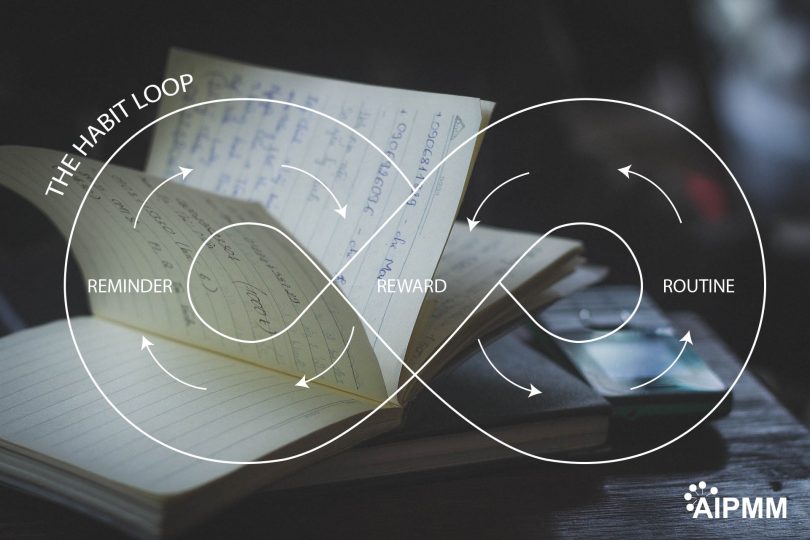If you had to make a list of all of the major pain points that product managers around the world deal with every day, efficiency would undoubtedly be right at the top. When a job pulls your attention in so many different directions, it can often seem like there just aren’t enough hours in the day to get everything accomplished.
In truth, that perspective is irrelevant. It’s not about figuring out how to find more hours in a day – it’s about being more efficient with the 24 that you have.
To put it simply, once you’ve acknowledged which habits you want to change you can only do so by returning to the habit framework or “habit loop” that gave birth to them in the first place.
Understanding the Habit Loop
In his book “The Power of the Habit: Why We Do What We Do in Life and Business” Charles Duhigg described a straightforward neurological loop that forms the basis of every habit we develop; the habit loop. Essentially, this loop has three parts – the cue, the routine and the reward. I like to think of this loop as the three Rs: reminder, routine and reward.
For product managers, the key to getting more done and increasing efficiency doesn’t necessarily involve breaking this habit loop. It involves understanding as much as possible about it so that you can make positive, proactive changes as necessary.
For the sake of example, let’s look at one of the most constant (and infuriating) struggles for of product managers – the constant flow of emails that seem to demand immediate attention. Emails have long been one of the major causes of inefficiency in professional environments everywhere – they’re even something that the Harvard Business Review has proposed eliminating entirely. Emails are a great way to communicate, yes – but constantly checking and instantly replying eats up more time than it saves and often causes you to push more important tasks to the back burner at the worst possible time.
So once you’ve decided that the “routine” part of the habit loop is “checking emails far too often,” you can then begin to figure out what triggers that habit in the first place. What, exactly, is your own unique reminder? Do you have a fear of not being up-to-date on all the various moving parts of a project? Are you afraid you’re going to miss an important development? Do you have a few seconds of free time and you’ve just fallen into the routine of filling that space by checking your email, which itself snowballs into distraction after distraction?
If the reminder for this particular habit involves a fear of missing out on something important, the reward then becomes clear: you’ve confirmed that you are, in fact, up-to-date. But to change the habit, consider changing the routine itself. Instead of checking your email to see if you got an important update from Bob on Project X, get up and walk down to Bob’s office instead. Poke your head through the door and ask “is there anything I need to know?” If there is, you’ll find out about it. If there’s not, you can get back to work – all without checking your email.
The more you understand the routine itself, the easier it will be to identify both the reminder and the reward. At that point, recognizing WHY you’ve developed inefficient habits puts you in a much better position to change them moving forward.
In the End
Once you begin to examine things from this perspective, it’s clear that you can change a habit – you just have to understand as much about the habit framework or habit loop as possible.
If you need to get more done in a day, first make a list of all the habits you’ve developed that lead to inefficiency in the first place, then examine them through the structure of the habit loop. Once you know A) what it is you need to change, B) what caused that habit to form in the first place and C) what you’re getting out of it, if anything, it’s easy to take a clinical approach to change in your daily life.
At that point, all you have to do is eliminate the “wheel spinning” habits and double down on the ones that drive your productivity forward. For product managers, this creates an environment where you don’t have to focus on finding new ways to create efficiency every day – efficiency more or less creates itself.
Do you feel the need to boost your efficiency (okay, who doesn’t)? Then you will definitely want to catch my April 27 webcast when I share some efficiency habit-forming techniques using some cool technology tools. This isn’t the tired “try to be more organized” mandate. This is about using the skills and savvy that so many product professional already have, and using them to rocket productivity. You’ll learn how to quickly incorporate Evernote and other tools to digitize documents, and much more! Sign up today!



